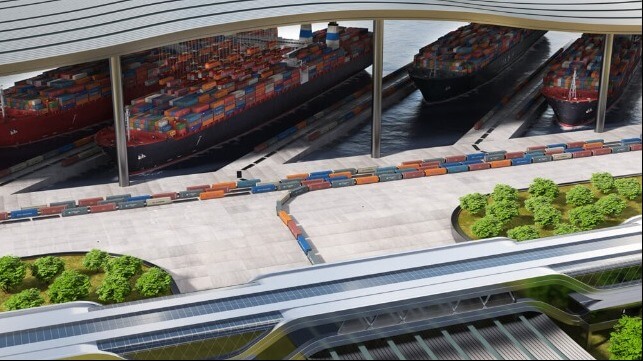Startup Plans Alternative to Panama Canal with Automated Maglev System
Tunnel across the Isthmus of Panama would transport containers and become a transshipment hub

A Florida-based startup is proposing a fully automated container transport system that would whisk containers via a tunnel across the Isthmus of Panama using Maglev technology. According to the company, Zergratran, its Puerto Internacional Las Americas (PILA) would provide a critical new container shipping route to avoid the bottlenecks at the Panama Canal as well as a distribution point for Colombia, Central, and South America.
Started in 2019, Zergratran’s concept calls for a tunnel that would stretch 80 to 100 miles across northern Colombia just south of the Panama Canal. It would provide container transportation between the Gulf of Uraba on the Atlantic coast and Jurado on the Pacific coast of Colombia. The company highlights that the Gulf is already emerging as a key container handling area with three terminals planned by CMA CGM, Hyundai, and a group of Brazilian investors.
As shown in a rendering, the ports would have covered berths where containership would discharge or load containers that would be automatically moved to a transport system. The transport system would be based on Maglev technology, a widely used term for a variety of technologies that use magnetic levitation where one set of electromagnets pushes the train above the track and a second set pulls the train forward.
Maglev technology has been used for nearly 60 years although most of the systems have been slow speed typically under 100 mph. Scientists and engineers continue to work on concepts for high-speed trains using technologies such as high-temperature superconducting magnets which they believe could travel at speeds of up to 400 mph. Zergratran in its materials says containers would be moved between the two terminals in times of less than 30 minutes.
According to the company, its PILA will be “the focal point of a systemwide efficiency upgrade driven by automation, containerization, digitization, technology and connections to neighboring port facilities.” Large ships could unload their cargo and send them across the Isthmus sorted to smaller, faster regional ships. In addition to becoming a distribution center for goods going to and from South America, they believe it would also provide an opportunity for ships currently going back west mostly empty to load additional cargo.
“Our goal is to build projects that upgrade the global transportation infrastructure system and address the major marine trade chokepoints, starting with a transshipment facility across northern Colombia,” the company writes in an offering prospectus. After being privately funded, they are now seeking $75 million as its initial step toward building the first shipping corridor.
They project that pre-feasibility will last for about a year, followed by 12 to 18 months to complete feasibility studies at a cost of $500 million. Zergratran plans to seek government funding from Colombia or alternately says the project could be built at a cost of $15 billion. Construction is projected to require six years using a series of high-power boring machines creating the potential to transport the first containers by 2028.
